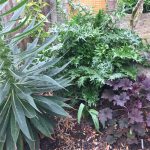Tomatoes sit atop everyone’s grow your own lists, and if they don’t, they should! Relatively easy to grow – with a few quirks – tomatoes are highly productive plants that can produce enough fruits in summer for salads, chutneys and sauces. This is true even in small spaces.
About tomatoes
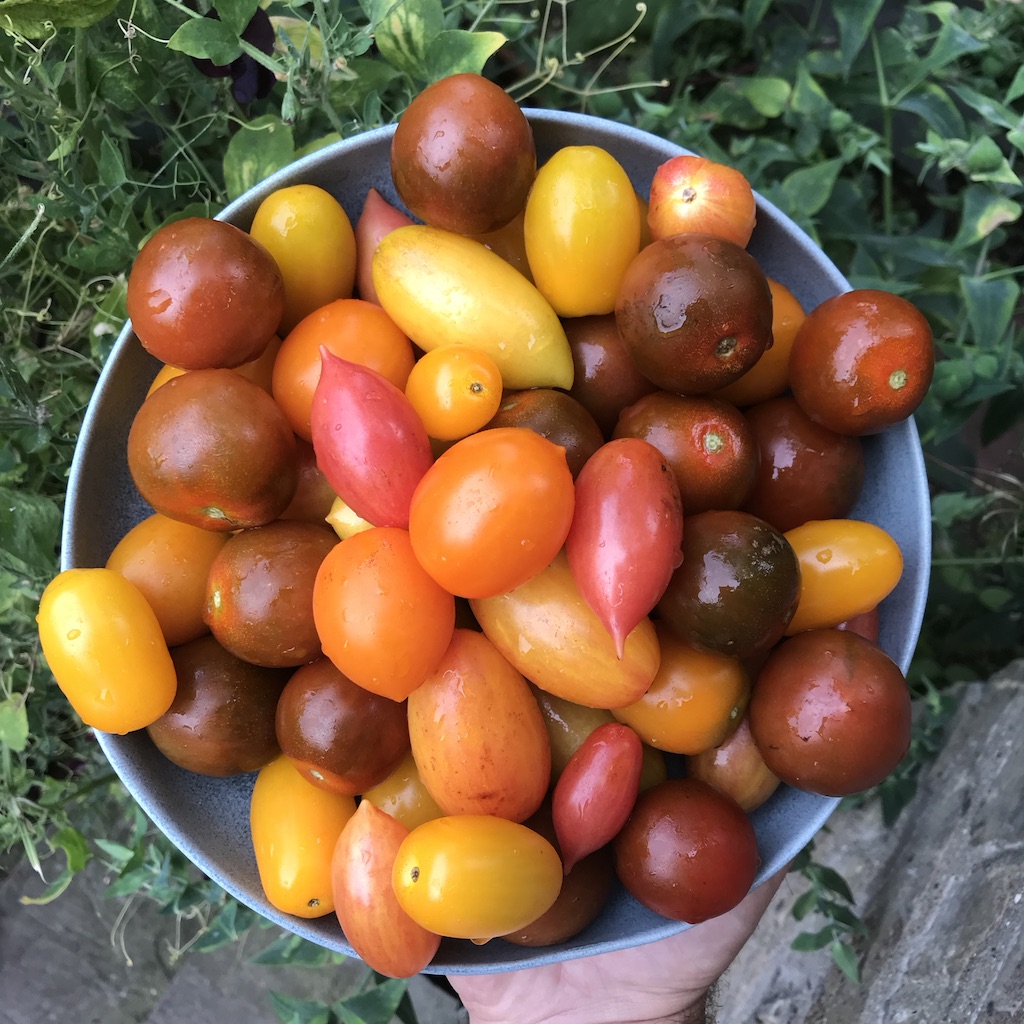
The tomatoes we recognise today are plants bred by humans from the species Solanum lycopersicum, originally local to Peru. In the technical scientific sense, tomatoes are fruits classified as berries. However, we use them as vegetables. Many ornamental and wild plants exist in the same family as tomatoes called Solanaceae. Including the poisonous deadly nightshade (Atropa belladonna), bittersweet nightshade (Solanum dulcamara) and Angels Trumpets (Brugmansia spp.)
Ideal tomato growing conditions
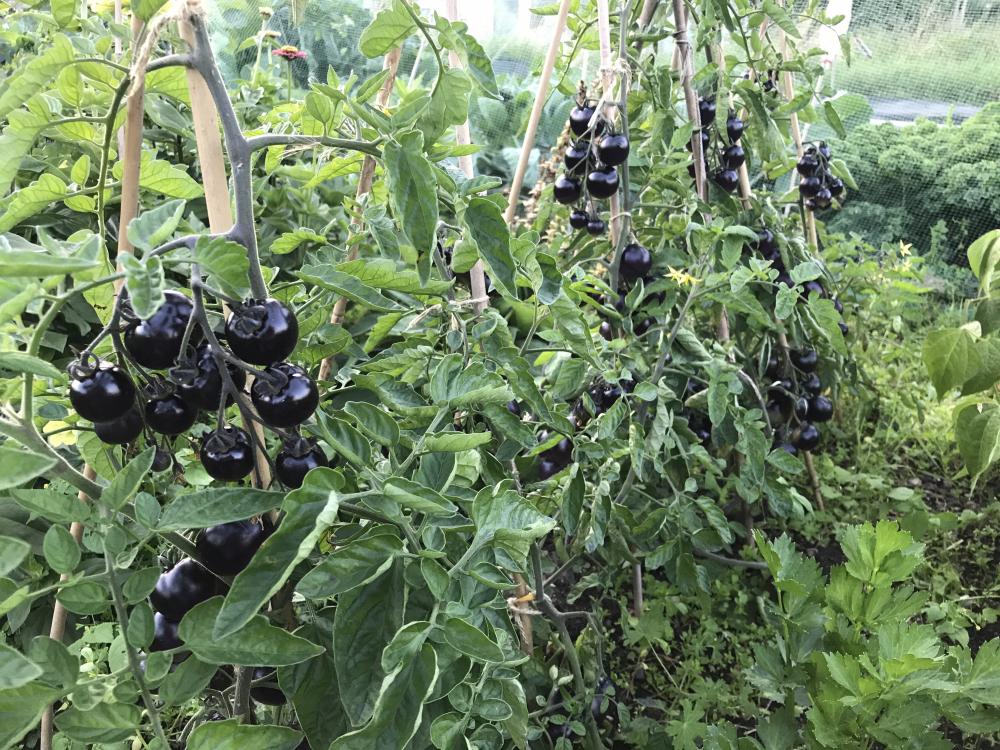
Tomatoes need warmth, sunlight and nutrition, lots of all three. They are not frost hardy and are grown from seed each year as annuals in temperate climates. If you have a greenhouse or polytunnel, growing tomatoes indoors can help increase yields, though in warm spots, isn’t essential.
Sowing tomato seeds
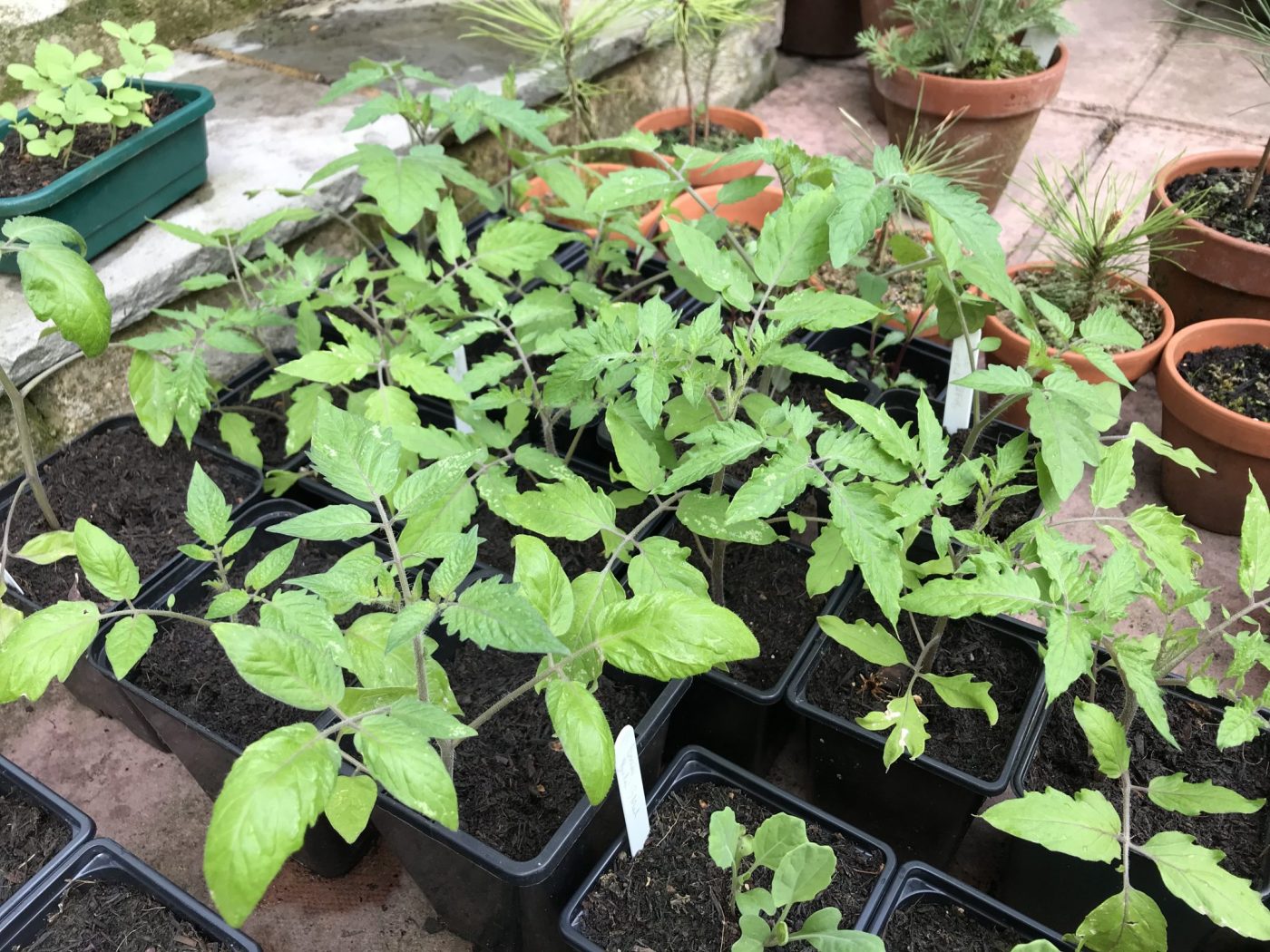
Tomatoes should be sown indoors and I sow them on my windowsills in late winter to early spring, between the start of February and the start of April. Any later and things are getting a bit tight with the growing season for a good crop, but still worth doing – if you’re reading this in May and forgot to sow the seeds, give it a try!
When to sow will depend on where you are and your last frost date, I would aim to sow the seeds 6 – 10 weeks before planting out. Personally I aim for 8 weeks because tomato plants grow incredibly quickly and you don’t want to have to pot them up into larger pots multiple times on your windowsill or bench before planting out.
I sow the seeds onto the surface of peat-free compost and brush with my finger a few crumbs of compost around them so they are just covered with a thin dusting, though they’ll grow without doing this, left bare on the surface. Water in a little and cover the seeds with a propagator lid or glass to maintain humidity until they germinate, then remove it when their seed leaves (the cotyledons) are fully open. Which will only take a few days.
Sow the seeds into seed trays a couple of centimetres apart, this allows you to then lift each plant out carefully by the leaves – being careful not to damage the roots – once they have a couple of true leaves (four leaves in total). This is space saving early on and tomatoes are very happy being replanted. Plant them into 9cm pots of peat free compost and grow on until about 15 – 20cm tall. Alternatively, sow the seeds directly into 9cm pots, the plants grow so quickly this is fine if you have space.
Determinate or indeterminate
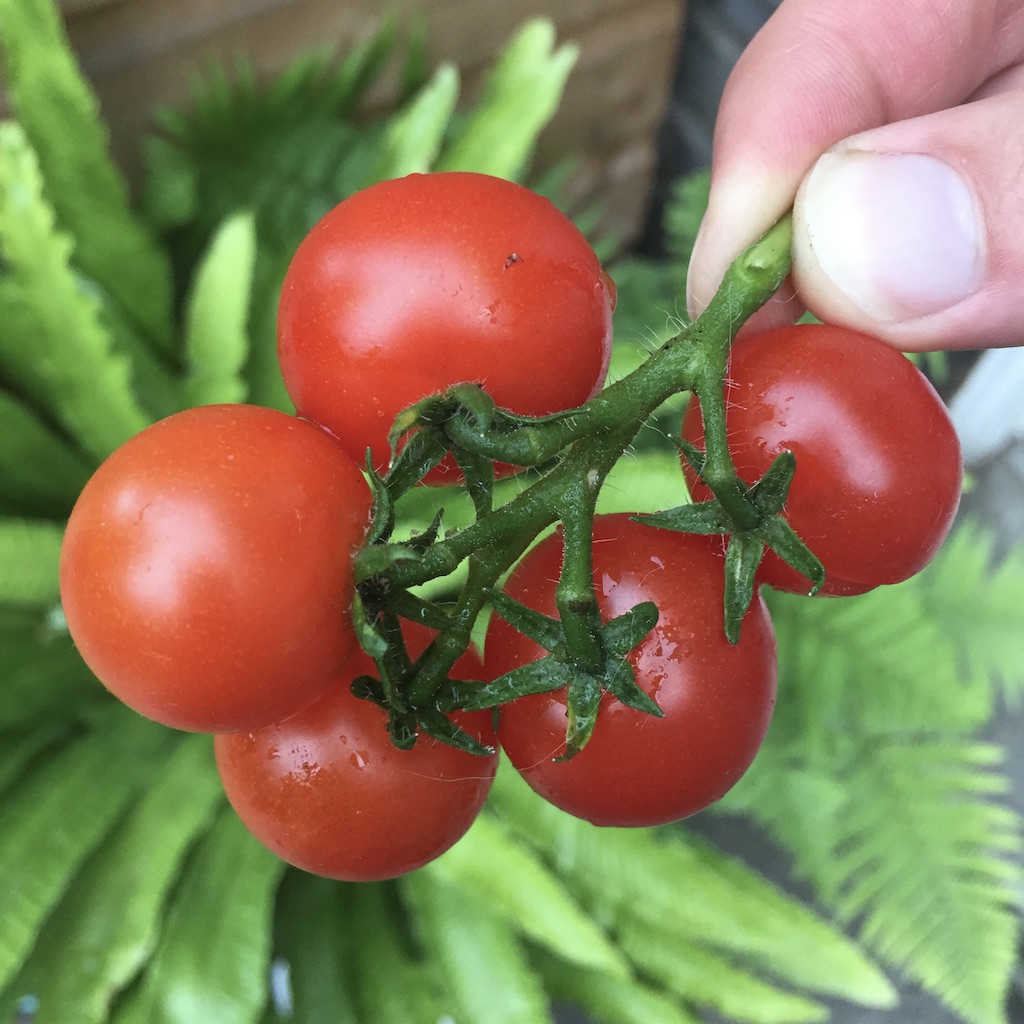
Tomatoes have been bred to grow in one of two ways:
- Indeterminate = vine varieties
- Determinate = bush varieties
Most tomato varieties are vines (also called cordons) because these grow into larger, more vigorous plants that support large crops. They are also space efficient, growing upwards on a small footprint (rootprint?) squeezing more tomatoes into remarkably small spaces. This vertical growing quality makes tomatoes perfect contenders for small and urban gardens.
However, there are some bush tomatoes like ‘Vilma’ that are bred to be compact for containers, though they usually only produce small or cherry tomatoes. These are also great for small spaces or in pots by front doors, benefiting from not needing to be supported by canes.
Indoor tomatoes or outdoor tomatoes?
If you live in an area that has a warm and sunny spring and summer, growing tomatoes outdoors should be absolutely fine. I have grown tomatoes outside in pots and the ground in our garden, a community garden and on my allotment in London. The allotment being pretty exposed to the elements and on the outskirts of London, not benefiting from the city’s microclimate.
A benefit of growing tomatoes outside is that you are less likely to have problems with white fly because predator insects will eat them and they’re blown away by the wind. However, if you do have a greenhouse or polytunnel, you could consider growing tomatoes in these. In colder climates you will have to.
Benefits of growing tomatoes undercover are the warmer conditions and you’re protecting the plants from tomato blight, a fungus-like infection that can kill the plants rapidly in warm, wet summers. That said, indoor tomatoes are more likely to be affected by white fly and you will need to pay more attention to watering and shading them on particularly hot days.
Planting out and spacing
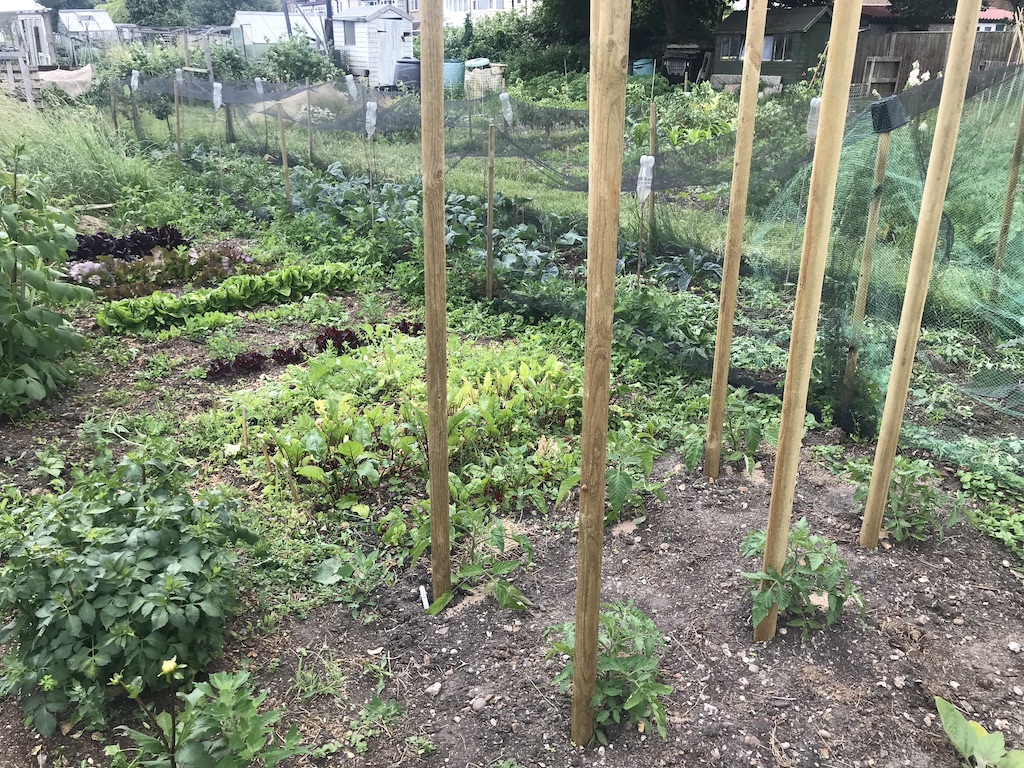
Plant tomatoes when all risk of frost is over (or it will kill them) 50cm part in all directions to give their roots room and to make it easier to weed around them. Pots can be 30-40cm as there is less competition from other plants, or fit three in a grow bag. Small bush varieties can be grown closer to about 40cm.
Prepare the soil in advance by adding a 2 – 4cm deep mulch of peat free compost or well-rotted manure. Preferably a month or two in advance to give time for worms and rain to work the compost in a little but at the time of planting is also fine.
When you plant tomatoes, bury them deeper than the level the seedlings are at. Tomatoes produce roots up the stem and by planting slightly deeper it will make them more stable and the extra new roots will help the plant take up more nutrition and water, and provide more anchorage.
Staking
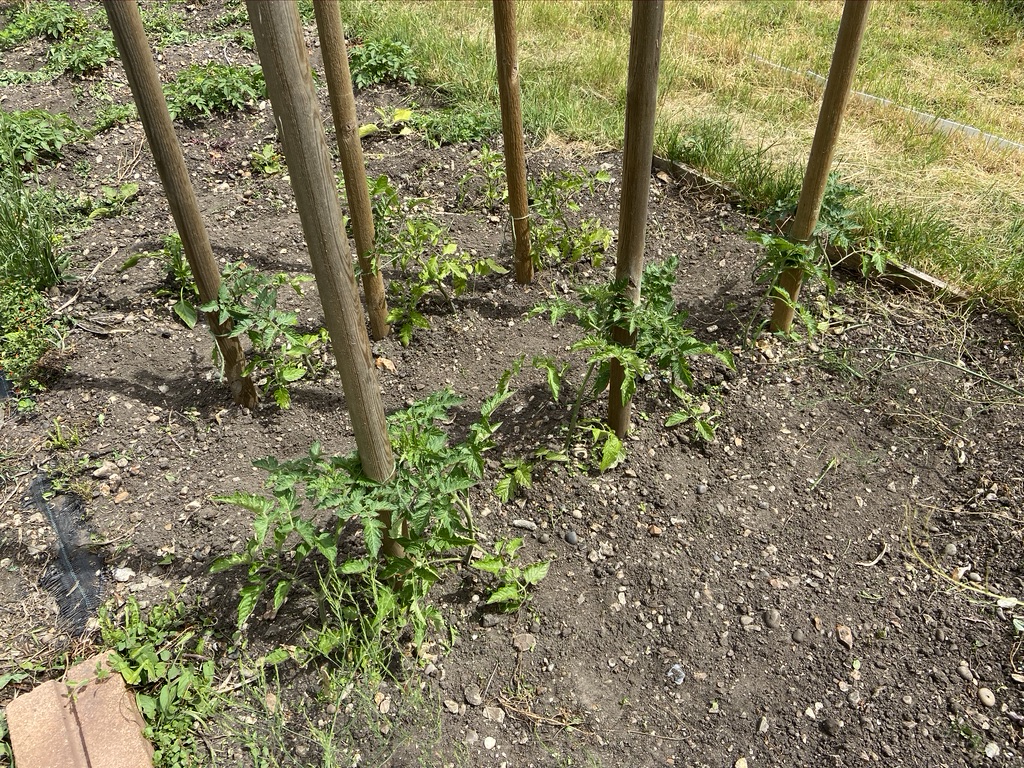
Determinate bush tomatoes don’t need staking but the majority are indeterminate vine types that do. The plants are floppy vines that in the wild would grow through shrubs or across the ground but to protect from slugs and snails and to give them the best amount of light, we grow them upwards.
In greenhouses and polytunnels the best method is to use strong string or rope tied to the roof beams. Tie the tomato plants to pieces hanging down above them as they grow.
Outside, I prefer to use 2.3m untreated solid tree stakes (above) at least 2.5 – 3cm thick, drive them at least 30cm into the ground to make sure they are sturdy, especially in exposed windy spots, like my allotment. Tomatoes can grow to head height.
Tie plants in gently using natural jute garden twine because it’s soft on the plant and naturally breaks down in future years added to the compost heap. Don’t tie too tightly otherwise it can cut into the stem as it grows.
In previous years I have used bamboo canes and metal canes, both were absolutely fine but the bamboo in particular felt very flimsy toward the end of summer under the weight of the full tomato vines.
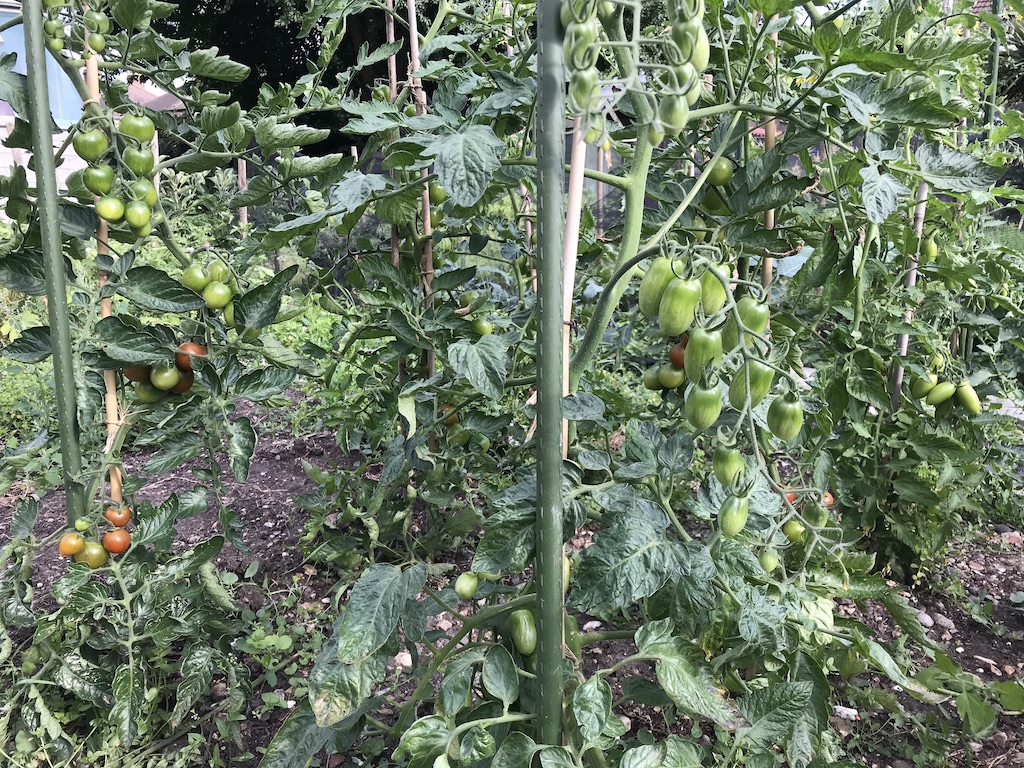
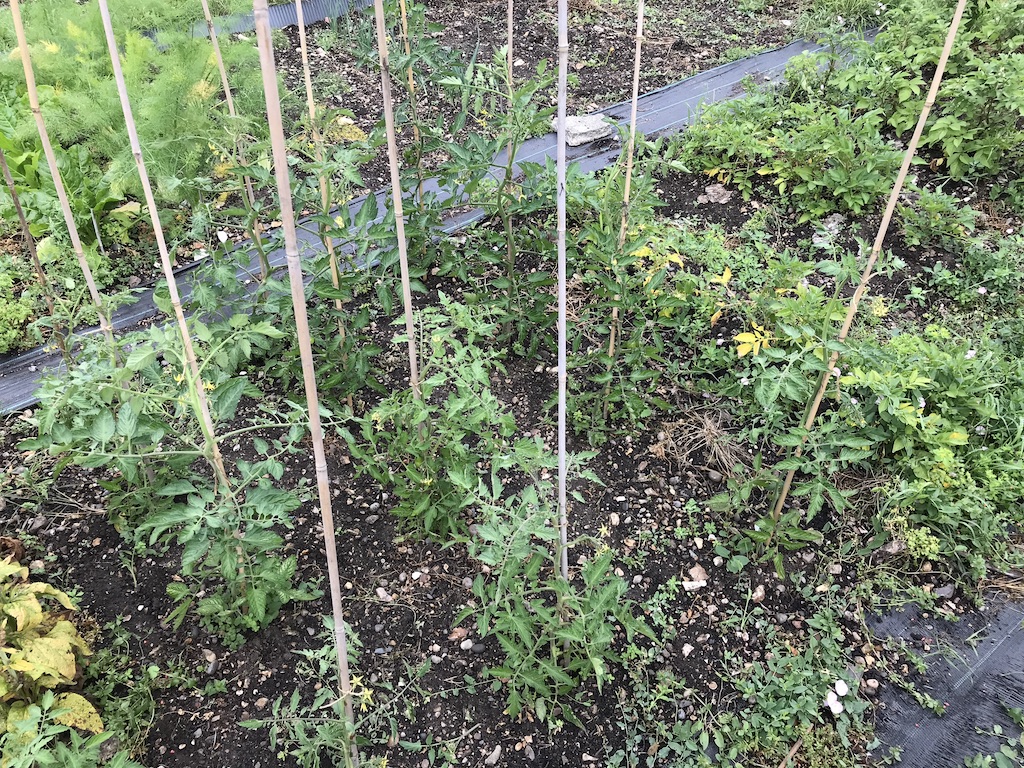
Remove side shoots on indeterminate vine tomatoes
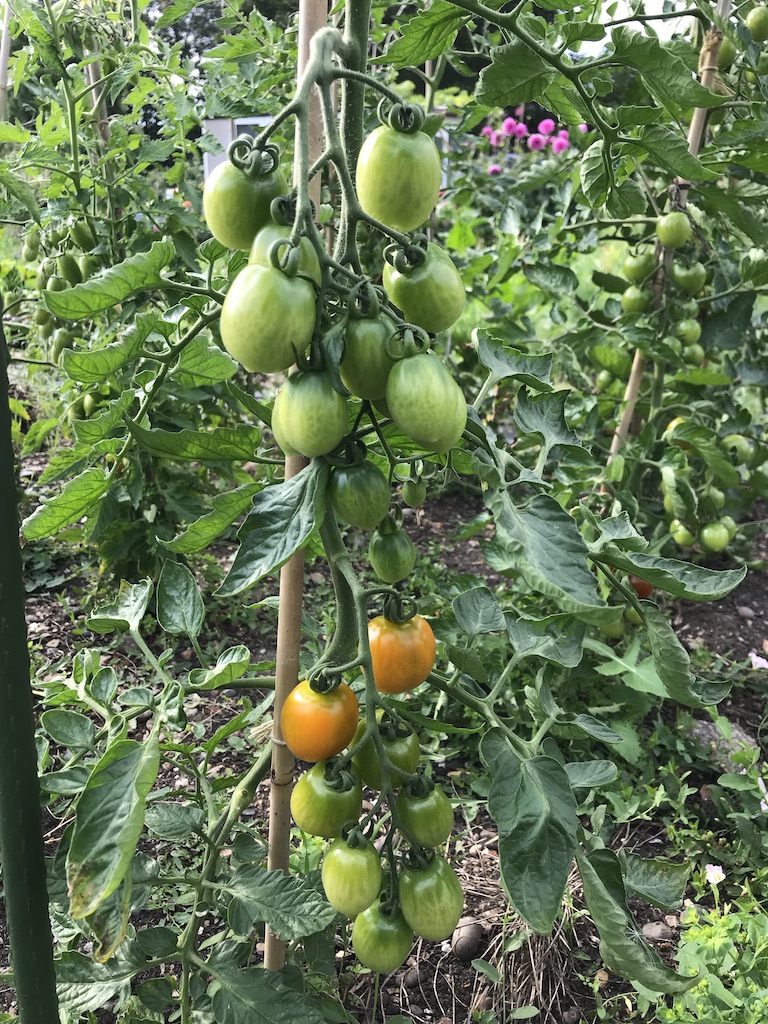
As the plants grow, nip out the side shoots with your thumbs to promote stronger upward growth. Leaving the flower trusses on, that grow from the stalk, as the flowers become the tomatoes.
Watering
Consistency is key with tomatoes, water well and often. Ideally this would be every few days in summer, if not more in hot weather, unless there have been heavy rains. Consistent watering prevents splitting skins and blossom end rot (discussed below).
Fertiliser
If you add a good mulch of compost or well-rotted manure, you won’t need much fertiliser as these hold nutrients that are slowly released. You could get away without fertilising tomatoes at all. However, you will have a better crop if you liquid feed every fortnight.
I only ever use organic fertiliser. Either tomato fertiliser based on seaweed or homemade fertiliser made from comfrey soaked for a few weeks in a bucket of water. The resulting liquid is a potassium rich fertiliser ideal for fruits and flowers.
Problems
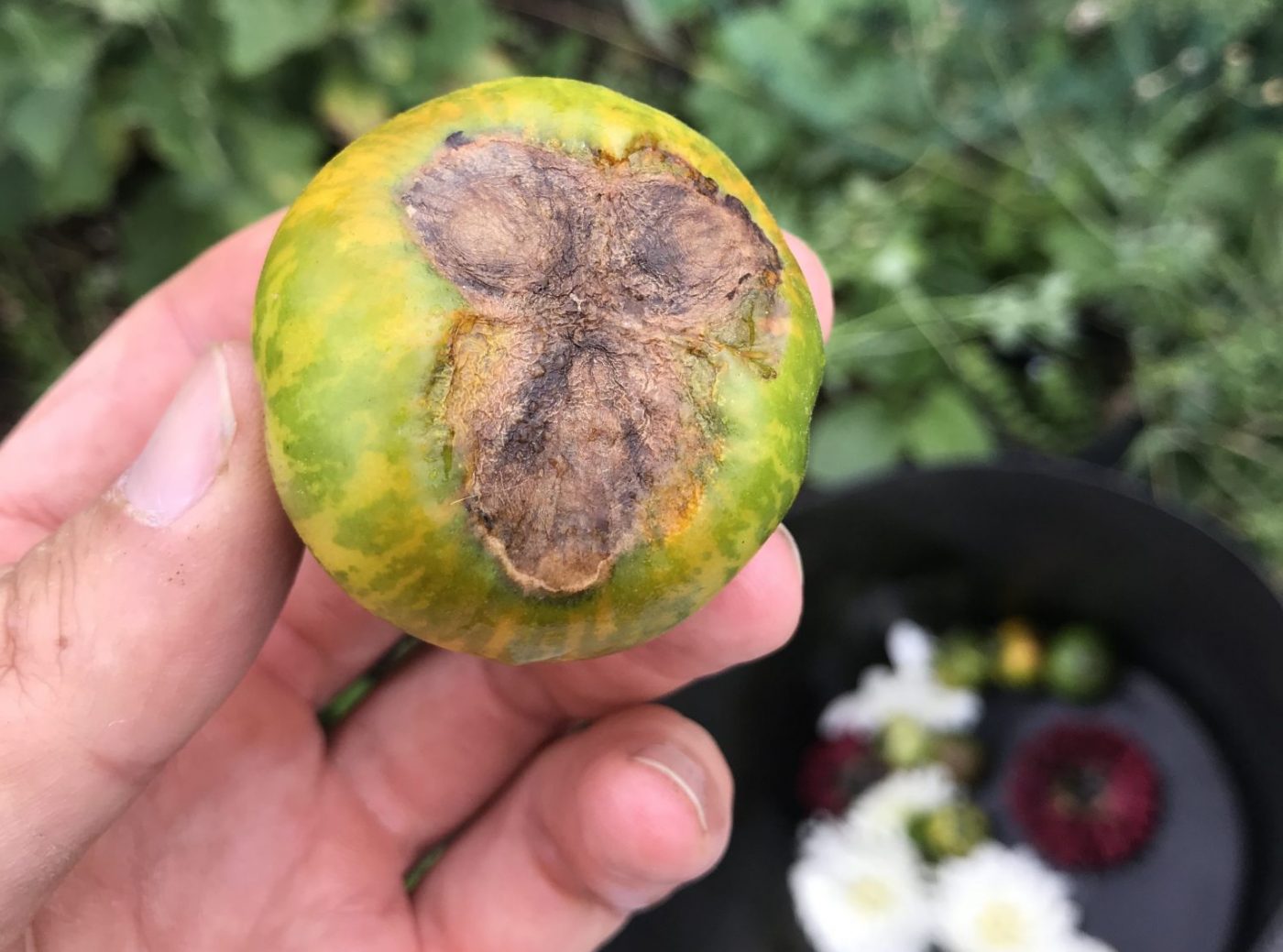
Blossom end rot: is caused when tomato plants aren’t absorbing enough calcium. There is always enough calcium available in soil and compost so blossom end rot is almost always caused by inconsistent watering. Water more consistently and new tomatoes developing on the plant won’t experience the problem. Remove affected fruit.
Tomato blight: is a fungus-like disease that quickly spreads between plants during warm, wet summers. Once infected nothing can be done and plants should be disposed of by burning or putting in the rubbish, do not add to compost heaps.
Split tomato skins: a very common thing to happen, the tomatoes split down the side. It’s caused by inconsistent watering where the plant is a little on the dry side and is then watered heavily, the skin can’t grow fast enough and splits under the pressure of all the water. Not a massive problem because they’re still edible if a little unsightly. Cut the tomato in half down the split and you’d never know on the plate.
Thick tomato skins: tomatoes can grow to have thin or thick skins, which isn’t a major problem as they’re all edible but thin skins are more pleasant to eat. Skin thickness depends a lot on the variety, however growing conditions can affect it. Tomato plants will grow thicker skins in response to conditions in an attempt to lock in more moisture; heat, lack of water and low humidity can all cause it. Watering regularly helps prevent thick skins and shading plants on the hottest summer days in greenhouses and polytunnels can help too.
Saving seeds
You can collect and save tomato seeds easily by scooping them out of a tomato, rinsing through a sieve to remove some of the sticky coat and leaving them on a plate (not paper) for a week or so until they dry completely. Use a plate instead of kitchen paper as so often recommended because the seeds are then easier to collect off the plate whereas the paper sticks to them. Don’t worry if any mould develops in the meantime.
Store the dried seeds in a brown paper envelope or bag in a cool dry place until next spring. Be sure to name and date them as it’s easy to forget what they are after a number of months have passed!
Tomatoes that are open pollinated will generally come fairly true to the parent because of the shape of the flower which means they usually self-pollinate, rather than insects pollinating them.

Best varieties of tomatoes to grow
I listed a number of my favourite tomatoes grown over the years and many new cultivars I’m trialing in Issue 1 of my Wild Way Newsletter (January 2021) available to subscribers. Once subscribed you can read the full article. Since then I have conducted an outdoor tomato trial from our exposed plot in Yorkshire for Gardeners’ World Magazine (grown in 2022) and you can now follow my new trials as I grow more in 2023 in my Wild Way newsletter.


